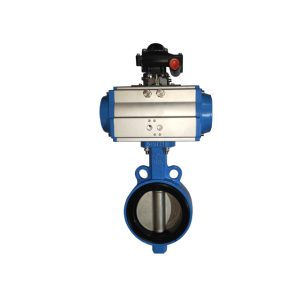Table of Contents
ToggleWith processing plants containing thousands of pipes, vessels, and valves, following consistent dimensional and test qualification standards is crucial. ASME B16.34 is one of the foremost valve specification standards enabling reliability across industrial flow control applications.
- ASME B16.34 is a key standard for sizing, designing, and testing valves
- It covers materials, dimensions, ratings, testing for various valve types
- Compliance ensures interchangeability and safety across industries
Developed by the American Society of Mechanical Engineers (ASME)[1], this standard aims to drive quality, efficiency and safety by facilitating appropriate valve installation and replacement. Going beyond just valve construction, it also considers integration within piping systems.
Introduction to ASME B16.34
First published in 1927, ASME B16 has undergone multiple revisions over 90+ years by industry experts across oil and gas, chemical, power and other sectors. One of its standard “ASME B16.34” compiles universally recognized specifications for critical valve types, including:
The standard outlines dimensions, materials, designs, pressure ratings, and testing procedures to create consistency. By providing stringent qualification benchmarks, ASME B16.34 compliance certifies suitability for various corrosive, hazardous, high-pressure applications.
Key Aspects of ASME B16.34
The ASME B16.34 standard covers several vital areas that enable reliability and consistency across industrial valve designs and performance.
- Materials and Manufacturing Processes
ASME B16.34 thoroughly details approved materials and manufacturing methods for valve components. It allows common valve body materials like carbon steel, stainless steel, alloy steels, cast iron, bronze and nickel alloys. The standard specifies these based on factors like temperature, pressure, and fluid compatibility needs of the application.
B16.34 also governs vital manufacturing processes, including casting, forging, welding, heat treatment, and machining. The goal is to build resilience against leakage, corrosion, erosion, and other failures across valve types.
- Testing Protocols
There are extensive testing protocols mandated by ASME B16.34 to validate that design standards are achieved. Based on valve type and size, qualifying tests range from shell test, seat test, air test, and hydrostatic test to verify pressure and temperature ratings. The standard also specifies stringent fugitive emissions testing of packing and seat leakage rates, particularly for applications involving hazardous gasses or environmentally sensitive areas.
- Interchangeable Dimensions
To enable interchangeable maintenance, B16.34 standardizes acceptable tolerances for valve ends, flange facings, stem diameters, port sizes, and component thickness. This dimensional consistency allows replacement valves to easily fit between existing piping flanges without modifications. Such interoperability significantly minimizes downtime costs associated with custom retrofitting.
- Pressure Class Ratings
The ASME B16.34 test pressure containment qualifications categorized from 150 psi to 4500 psi ratings provide performance benchmarks across valve types. B16.34 valves must meet the design standards for their specific pressure class to reliably handle fluids across high-pressure applications while preventing leakage or blowout failures.
Benefits of ASME B16.34
ASME B16.34 has numerous benefits, including:
- Reliability and Safety
By containing stringent design, material, and testing requirements, the ASME B16.34 standard ensures valves withstand high temperatures, pressures, and hazardous fluids across industrial applications. Compliance certifies resilience against corrosion, erosion, and leakage, even under excessive cycling or abrasive service conditions. This prevents valve failures leading to plant disasters, enhancing reliability and safety.
- Optimized Maintenance
With standardized ASME B16.34 valve dimensions, replacement valves are easily installed between existing piping flanges without modifications. This allows quick valve changeouts during shutdowns or outages to minimize maintenance costs and production losses from extended downtime. The dimensional interoperability also enables stocking standardized spare valves onsite to expedite maintenance needs.
- Interchangeable Supply Chain
Global valve manufacturers and suppliers conforming to ASME B16.34 guarantee interchangeability. Plant operators and engineers can source equivalent valve designs from alternate vendors since compliance certifies meeting identical specifications. This prevents vendor lock-in and hefty customization fees when requiring valve replacements or additional stock.
- Simplified Valve Selection
The specifications around materials, pressure ratings, and configurations consolidated in ASME B16.34 simplify the valve selection process for specific applications. Rather than complex customization, engineers can easily determine suitable valves for services across chemical plants, LNG terminals, offshore rigs, and pipelines based on location specifics by relying on B16.34 standards during procurement.
Applications of ASME B16.34 Valves
Here are some common applications leveraging valves compliant with ASME B16.34:
- Oil Refineries
Oil refineries contain thousands of gate, ball, check, and plug valves across crude units, hydrocrackers, reformers, fractionators, and cokers. B16.34 facilitates procuring specialized valves to handle high temperatures, pressures, and continuous flows of corrosive feedstocks. Compliance also enables quickly swapping standardized valves during shutdowns to minimize production losses.
- LNG Facilities
Cryogenic gate, ball, and check valves meeting ASME B16.34 serve critical roles across LNG loading/unloading, liquefaction, storage, and regasification. The stringent leak and cryogenic testing ensures resilient ultra-low temperature service down to -260°F without embrittlement failures. Compliance also standardizes flange dimensions for quick valve replacements.
- Pipeline Transfer Stations
Transfer stations regulating multifuel movement across transmission pipelines utilize high-pressure ball, plug, and check valves certified by B16.34. Compliance validates meeting stringent fugitive emissions standards needed across gas pipelines and water pipelines traversing environmental areas.
- Petrochemical Plants
Valves for critical services linking reactors, crackers, separators, and distillation columns in petrochem plants carry ASME B16.34 marking. Compliance guarantees reliable pressure sealing needed when handling volatile intermediates at high temperatures. Standardization also simplifies maintenance with interchangeable spares, minimizing shutdown losses.
Conclusion
Adhering to ASME B16.34 ensures valves reliably handle pressurized fluids and gasses, prevent leakage, and simplify maintenance needs across critical industries. By standardizing materials, designs, and dimensions and stringent testing, compliance with B16.34 minimizes plant risks and downtime losses.
Contact Xintai’s application engineers to select optimized ASME B16.34 conformant valves for your unique demands to drive operational excellence.










